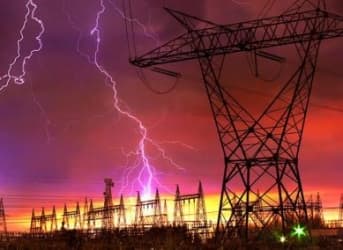Both the energy and transportation industries are on the brink of a revolution — if someone develops the right electricity storage device.
For the automobile industry, the better the battery, the more electric cars will take to the road. For the electricity grid and its users, improved storage devices make intermittent renewables, such as wind and solar, more dependable sources of power and could enable them to take market share from the established utilities.
Batteries storing energy near places of consumption might reduce the need for transmission lines. Energy storage near centers of consumption can support micro-grids that can operate independently of the existing electric grid. Obviously, if the right storage at the right price existed, we wouldn’t be having this discussion. Related: 60 Reasons Why Oil Investors Should Hang On
Not long ago, editors of The Economist, focusing on one storage device, gushed that “the lithium-ion battery is the technology of our time.” Around then, Steve Huntoon, a veteran energy lawyer and consultant, shredded the notion that lithium-ion batteries would meet large-scale grid needs. But he did that in Public Utilities Fortnightly, not a likely read for Economist editors. At her deathbed, Gertrude Stein supposedly asked, “What is the answer?” and when nobody answered, she then asked, “What is the question?” If lithium-ion is the answer, what is the question?
It may not matter whether the new storage devices provide a more economical solution. Early adopters of new technologies are often motivated by a social or environmental vision. They did not buy electric lighting when it was introduced for economic reasons. Nor the iPhone. Nor the Tesla. Women did not stop buying fur coats because of a mink shortage, either. Cultural norms change and smart business people either produce products for those new norms or they create the new norms with a spectacular new product.
Consider, too, that technology is not the device itself, as Thomas Hughes, the historian, pointed out, but rather a system designed to produce a solution, and that system includes the technical (the tool), sociological, cultural and economic components. The steam engine, for instance, was developed to get water out of mines, but its further development required an environment of mining, commerce, science and finance. Successful storage technology requires the right support from industry and the right messages from customers. Related: Is China The Big Sponge That Absorbs The Oil Glut?
Thus, if enough people want electric cars for whatever reason, don’t argue that batteries are uneconomical or impractical compared to what the industry would prefer to do. Define the issue properly. Consumers want a product that they think helps to solve a problem that they perceive. It is not that consumers don’t understand the economics. They are not interested. There’s a market out there. Go out and develop a better battery.
That is what the auto companies have begun to do. The electric industry should take notice. The existing grid should not impose its metrics on its customers if they want something else. If consumers want more independence and cleaner electricity, find a way to provide those products efficiently. Don’t complain that customers don’t understand. That is what most real business people would do, the ones that want to stay in business, anyway.
Okay, but the technology does not exist, so we can’t do it. Well, years ago, biologist Paul Ehrlich and economist Julian Simons made a famous bet on the price of minerals. Ehrlich declared that depletion of minerals resources would create shortages and raise prices. Simons said otherwise. Simons won because metals users adjusted their consumption to new prices and found substitutes and suppliers came up with new sources.
People who believe in market forces and human ingenuity will bet that someone will solve the storage problem, although not necessarily with lithium-ion. Anyone who has dealt with scientists at major research universities or with venture capitalists will make that bet. Others can’t see beyond the existing data. They view the world in static terms. Governments solved the problem of the inefficiency of incandescent light bulbs by banning them. MIT researchers decided to try to develop incandescent bulbs as efficient as LEDs. Why bother? Because incandescents provide a warmer light. Apparently people like them better than LEDs. There’s a market out there. Related: Rig Count Update: Moment of Truth for the Permian Basin?
So, in the end, the lithium-ion battery may not be ready for prime time, at least not for large scale grid applications. But the demand is there for an energy storage device that addresses new social and environmental imperatives. This need in the electricity market will inevitably attract problem solving technology and capital. Maybe super-sized electric toothbrushes will store the charge between brushings. Who knows?
Here is the real question: has a paradigm shift (in the sense popularized by historian Thomas Kuhn) taken place in energy consumption, one favoring cleaner, less carbon-intensive, less grid reliant means of production? If so, don’t argue that the new thing is less economical. Most new things aren’t for a while. But it does not matter.
ADVERTISEMENT
by Leonard Hyman and William Tilles for Oilprice.com
More Top Reads From Oilprice.com:
- Is The Saudis Market Share Strategy Still Feasible?
- Russia Cries Dyadya (Uncle), Is Saudi Arabia Listening?
- This Could Be A Big Setback For Iran’s Oil Export Plans



















The serious answer to flattening energy generation and distribution is complementary generation rather than storage. Wind and solar energy both exist at different times of day in the same place in much of the world. Reconfiguring wind masts to accommodate solar collection could generate the most energy over a day in a given plot of land.